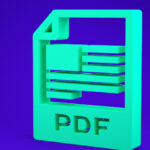Table of Contents
Introduction: Harnessing the Power of Predictive Analysis in Healthcare
Healthcare is undergoing a significant transformation with the increasing use of data-driven technologies. One such innovation, predictive analysis, is revolutionizing how healthcare providers deliver patient care. Predictive analysis involves using data, statistical algorithms, and machine learning techniques to identify future outcomes based on historical data. This proactive approach allows healthcare professionals to anticipate potential health issues, improve treatment plans, and enhance patient outcomes.
In this blog, we will explore the benefits and real-world applications of predictive analysis in healthcare. Additionally, we’ll discuss how this technology can work alongside essential services like confidential testing and CPR first aid training to create a more efficient, responsive healthcare system.
The Benefits of Predictive Analysis in Healthcare
Predictive analysis offers several key benefits that can enhance the quality and efficiency of healthcare. These benefits not only improve patient care but also optimize resource allocation and reduce costs for healthcare providers.
- Early Disease Detection: One of the most significant advantages of predictive analysis is its ability to detect diseases early. By analyzing patient data and identifying patterns, predictive models can flag potential health issues before symptoms become severe. This is particularly beneficial for chronic conditions like diabetes, heart disease, and cancer, where early intervention can drastically improve patient outcomes.
- Personalized Treatment Plans: Predictive analysis allows healthcare providers to develop personalized treatment plans based on individual patient data. For example, a patient’s genetic information, lifestyle, and medical history can be used to tailor a treatment plan that maximizes effectiveness while minimizing side effects. Personalized care leads to better patient outcomes and more efficient use of healthcare resources.
- Reducing Hospital Readmissions: Healthcare providers can use predictive models to identify patients at high risk of hospital readmission. By analyzing factors such as age, medical history, and previous hospital stays, providers can implement preventative measures, such as more frequent follow-ups or home healthcare services, to reduce the likelihood of readmission. This not only improves patient care but also lowers healthcare costs.
- Optimizing Resource Allocation: Predictive analysis helps healthcare providers allocate resources more effectively by forecasting patient demand. Hospitals can use predictive models to predict periods of high demand, allowing them to adjust staffing levels, manage inventory, and ensure that necessary equipment is available. This leads to improved patient care and reduced operational costs.
Applications of Predictive Analysis in Healthcare
Predictive analysis is used in various areas of healthcare, from identifying high-risk patients to optimizing treatment strategies. Here are some of the most impactful applications:
- Predicting Disease Outbreaks: Public health agencies can use predictive analysis to monitor and predict disease outbreaks. By analyzing data from multiple sources, such as hospital reports, social media, and environmental factors, predictive models can forecast the spread of diseases like influenza or COVID-19. This allows health authorities to respond quickly with targeted interventions, such as vaccination campaigns or quarantine measures.
- Improving Preventive Care: Predictive analysis can help healthcare providers identify patients who are at risk of developing chronic conditions, such as heart disease or diabetes. By analyzing patient data, such as family history, lifestyle, and biometrics, predictive models can determine which patients are at the highest risk. This enables providers to implement preventative measures, such as lifestyle changes or early medical interventions, to reduce the likelihood of disease development.
- Enhancing Confidential Testing: In addition to improving disease prediction and treatment, predictive analysis can be applied to confidential testing services. Confidential testing is essential for detecting sensitive health issues such as sexually transmitted infections (STIs) or HIV, without compromising patient privacy. Predictive models can be used to determine which populations are at higher risk of infection, enabling healthcare providers to offer confidential testing services to those who need them most. By targeting high-risk groups, predictive analysis ensures that resources are used efficiently and that patients receive timely care.
- Emergency Response Planning: Predictive analysis can also assist in emergency response, particularly in identifying areas where CPR and other first-aid interventions are most needed. By analyzing past medical emergencies, population density, and health trends, healthcare providers can predict where emergency interventions like CPR first aid training are most likely to be required. This allows communities to ensure that bystanders and first responders are adequately trained in lifesaving techniques, improving overall preparedness for emergencies.
Integrating Predictive Analysis with CPR First Aid Training
When predictive analysis is integrated with CPR first aid training, the healthcare system can take a proactive approach to managing emergencies. Predictive analysis models can be used to identify areas or populations where cardiac emergencies are more likely to occur. For example, by analyzing demographic data, healthcare providers can determine that older populations or those with a high prevalence of cardiovascular diseases are more likely to experience sudden cardiac events.
With this information, healthcare providers can focus CPR first aid training efforts in these high-risk areas, ensuring that more people are trained to respond to cardiac emergencies. This strategic approach increases the likelihood that a bystander will be present and able to administer CPR when needed, significantly improving survival rates for cardiac arrest victims.
Furthermore, the use of predictive analysis can help healthcare providers track the effectiveness of CPR first aid training programs. By analyzing data on emergency response times and outcomes in trained versus untrained populations, healthcare providers can adjust their training strategies to improve effectiveness and reach.
Confidential Testing and Predictive Analysis: A Powerful Combination
Confidential testing is a crucial service in healthcare, providing patients with the ability to receive testing for sensitive health issues—such as STIs or HIV—while maintaining their privacy. Predictive analysis can enhance these services by identifying individuals or communities that are at higher risk of infection. For instance, predictive models can analyze data such as sexual behavior, age, or geographic location to determine which populations should be prioritized for confidential testing services.
This targeted approach ensures that limited healthcare resources are directed where they are most needed, improving early detection and treatment rates for conditions like STIs. Additionally, confidential testing ensures that individuals can receive care without fear of stigma, encouraging more people to seek testing and reducing the overall spread of infections.
Predictive analysis also plays a role in improving access to confidential testing. By predicting where demand for such services will be highest, healthcare providers can ensure that testing centers are adequately staffed and stocked, reducing wait times and ensuring a smoother patient experience.
Ethical Considerations and Challenges
While predictive analysis offers significant benefits, it also presents ethical challenges, particularly around data privacy and consent. Healthcare data is highly sensitive, and ensuring that predictive models do not compromise patient privacy is critical. Predictive models must be developed and deployed with transparency, and patients must be informed about how their data will be used.
Additionally, predictive models must be designed to avoid biases that could lead to unequal care. For example, models should be trained on diverse datasets to ensure that they are accurate for all populations, regardless of race, gender, or socioeconomic status.
Conclusion: A Future Driven by Data
Predictive analysis is revolutionizing healthcare by providing tools that allow providers to anticipate and address health issues before they become critical. From early disease detection to optimizing emergency response efforts like CPR first aid training, predictive analysis empowers healthcare providers to deliver more efficient and effective care.
Moreover, predictive analysis enhances services like confidential testing by ensuring that testing resources are directed where they are most needed, improving early detection and reducing the spread of infections.
As healthcare continues to evolve, predictive analysis will play an increasingly important role in improving patient outcomes, optimizing resources, and ensuring that everyone has access to quality care. By embracing this technology, healthcare providers can create a more responsive, equitable, and efficient system that benefits all patients.
Vanita, the Editor and Learning Advocate at Faspe, emerges as a relentless champion for the joy of learning. With a keen understanding of the ever-evolving educational landscape, she dedicates herself to sourcing materials that ignite curiosity and foster growth. Vanita’s remarkable talent for pinpointing resources that resonate with students, coupled with her commitment to guiding parents through the educational odyssey, establishes her as an indispensable asset in the pursuit of enriching education.








